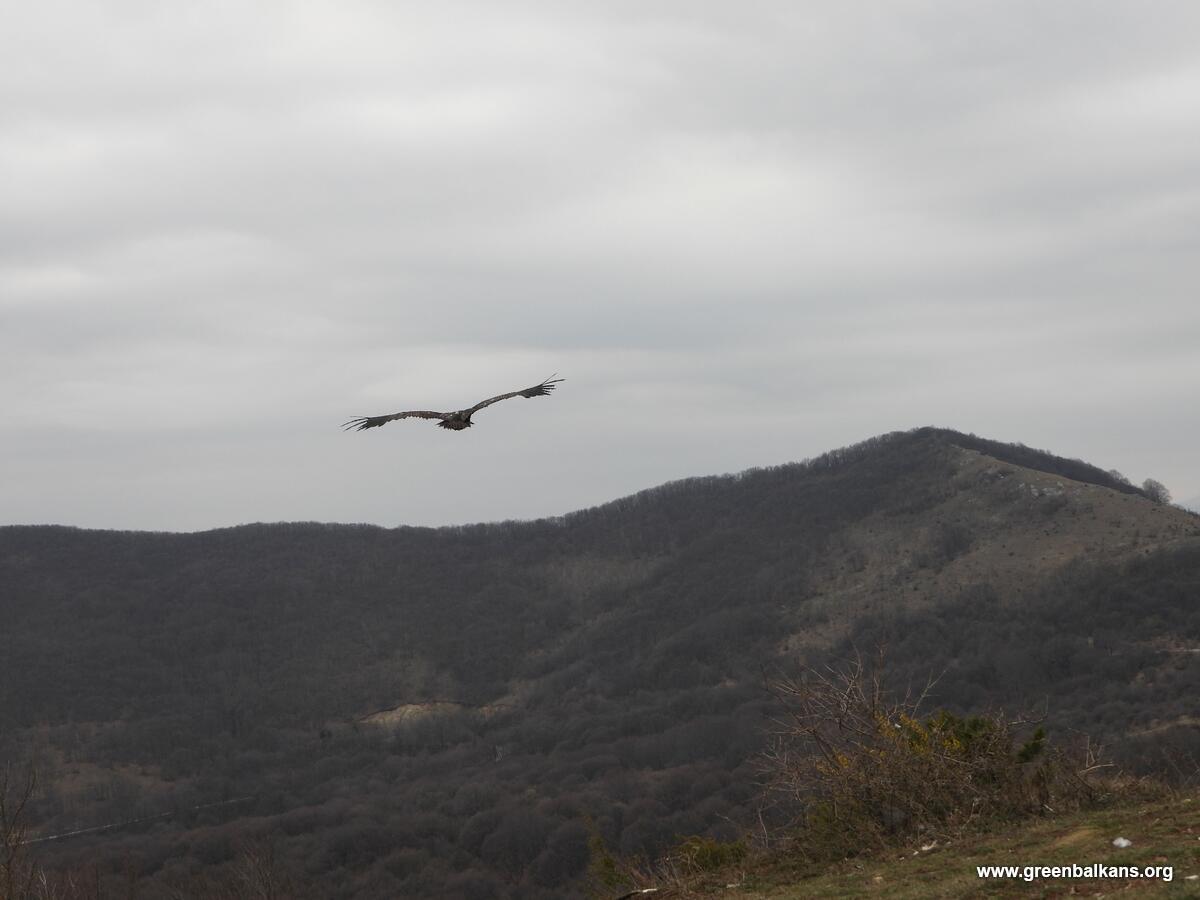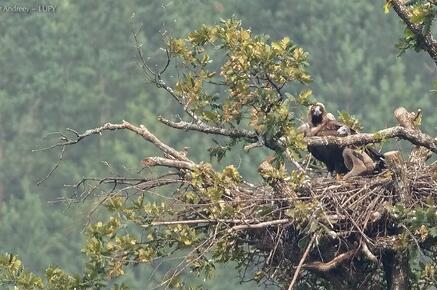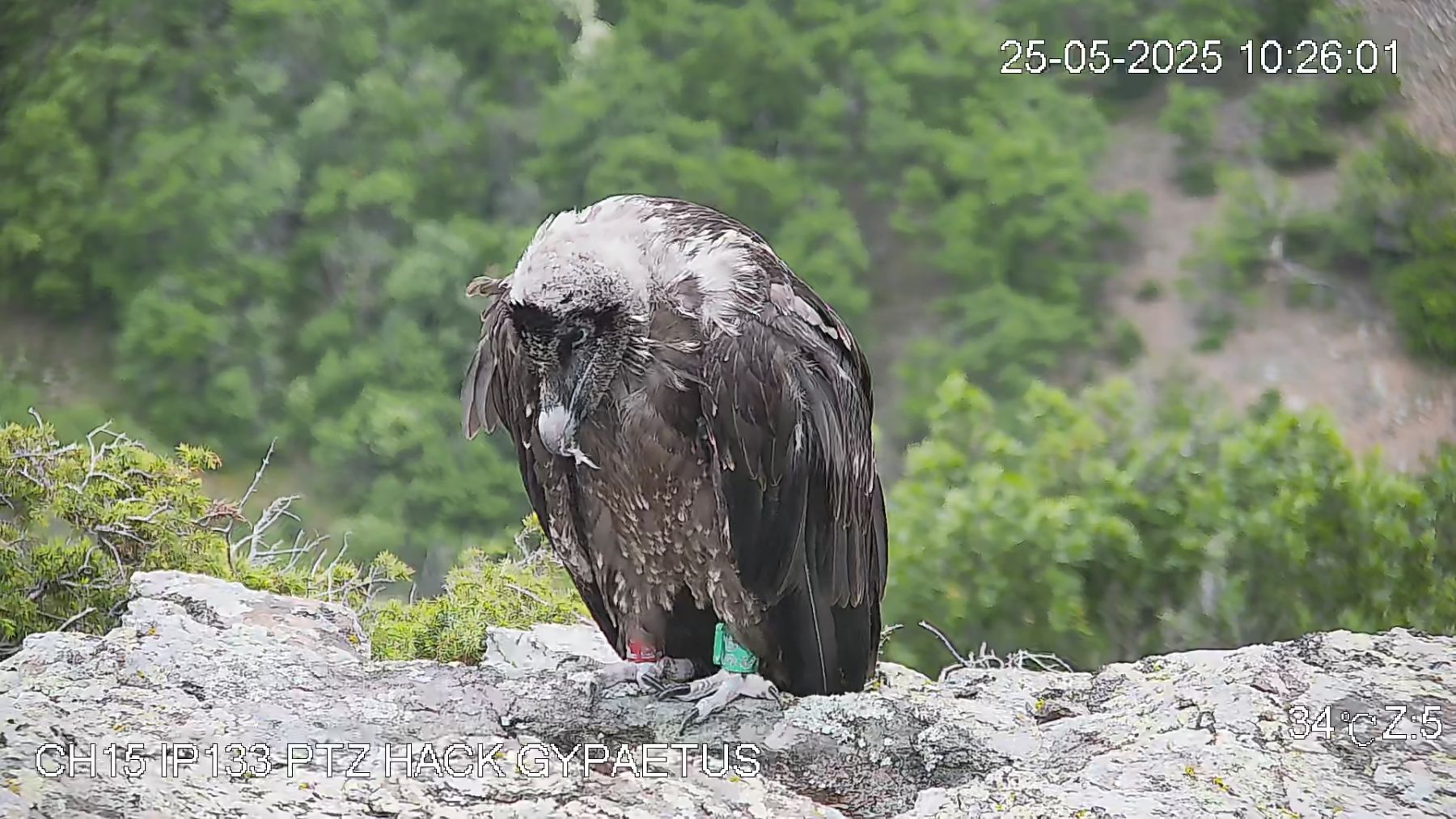Thanks to a remarkable international collaborative effort, a young female Cinereous Vulture (Aegypius monachus), identified as B14, returned to the Balkan Rhodope Mountains after a challenging one-year journey that took her from Bulgaria to Greece and back again.
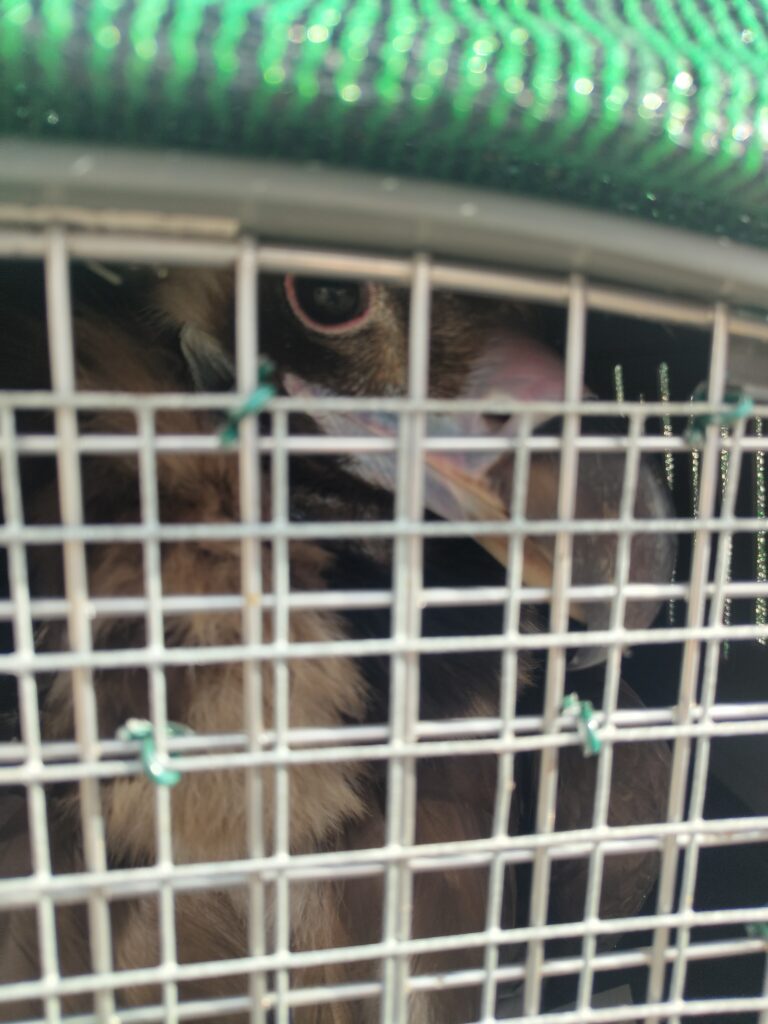
A flight across borders
B14 is a young female Cinereous Vulture (Aegypius monachus) released in Madzharovo (Bulgaria) with 12 more individuals on November 20, 2023. Her release was part of the Bulgarian Cinereous Vultures reintroduction programme. After a few weeks, she left the release site venturing south towards Greece.
On December 20, her GPS transmitter located her in Dikaia village (Greece) and signalled she was not flying as usual. Vultures are rarely found so close to human settlements. When it happens, it usually means that they are sick or injured. Consequently, the Bulgarian Society for the Protection of Birds (BSPB), that constantly monitors the released vultures, alerted the Didymoteicho Forestry Office. Concerned for her safety, they quickly mobilized to check on her.
The challenging rescue
The Didymoteicho Forestry Office patrol, coordinated by Dimitris Vasilakis, found B14 at dusk, sitting on the ground on the outskirts of Dikaiai. As they approached, she found the strength to take flight and disappear into the night.
The search continued the next day. Thanks to the contribute of the Bulgarian team, which shared her GPS position with the patrol, the young vulture was found again in a wheat field near the Ardas River. Despite the joint teams efforts, capturing her was more challenging than expected. She took flight and disappeared again.
Finally, on December 22, with careful coordination between Greek and Bulgarian teams, B14 was successfully captured. The team transferred her to a raptor rehabilitation facility in Dadia, with the approval of the Didymoteicho Forestry Office. Though weakened, B14 was in stable condition.
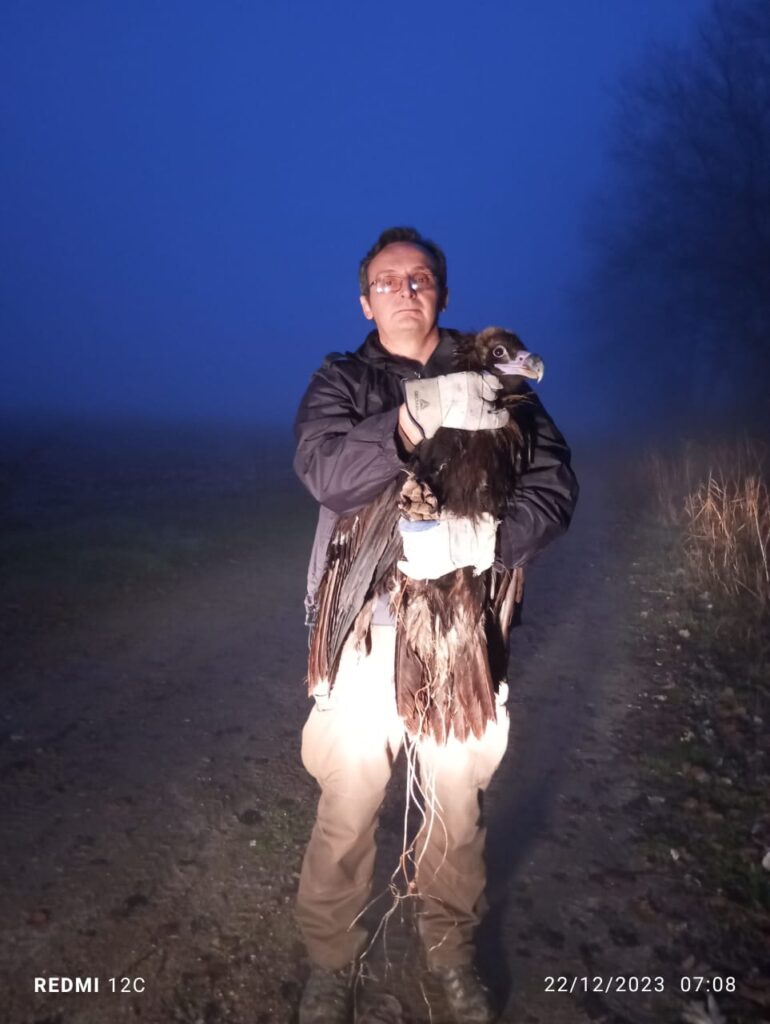
A hidden threat: lead poisoning
Even though the young vulture did not present any external significant injury, her behaviour alerted the rescue team. In fact, difficulty flying and general weakness are often associated with intoxication in vultures.
Further testing revealed that B14 had elevated levels of lead in her system, a silent yet deadly threat for scavenging birds. Lead poisoning is a major threat to vulture populations worldwide. It is often caused by ingesting contaminated carcasses or bullet fragments from hunting ammunition. The immediate rescue and the care at the rehabilitation facility in Dadia saved her life. At the beginning of 2024, B14 was out of danger, and she was transferred to the Attica Zoo in Athens.
The journey back home
As 2024 progressed, the Greek and the Bulgarian team paired again to arrange B14’s return to Bulgaria. Transferring endangered wild animals across borders is a complex process. The support of the Attica Zoo and the international conservation community was invaluable to bring B14 back home.
It took almost one year of extensive bureaucratic work to obtain all the permits for B14’s international transport. Finally, at the end of 2024, she was ready to travel back to Bulgaria, where her adventures started.
On January 31, 2025, the young female vultures finally settled in the Studen kladenets aviary in Bulgaria. She is now thriving, displaying normal behaviour and a strong appetite, eagerly awaiting her release. Her big day is scheduled for the end of March 2025, when she will take flight alongside the other Cinereous Vultures of the LIFE Rhodope Vulture reintroduction programme.

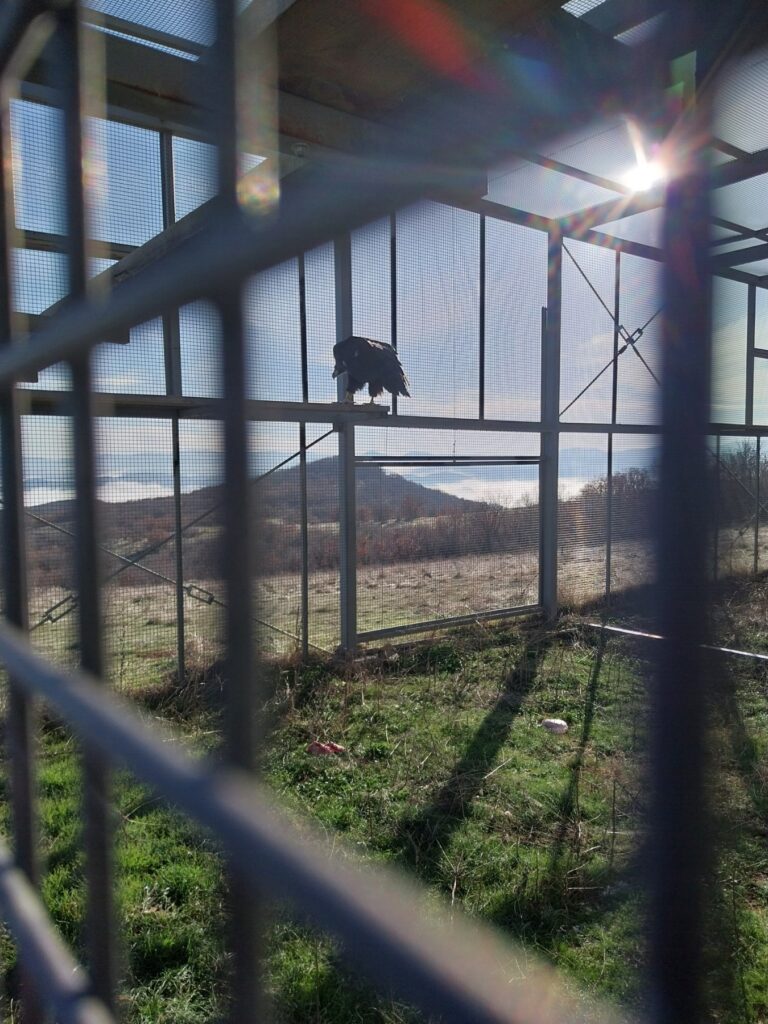
A testament to collaboration in conservation
B14’s journey is a powerful example of the dedication and teamwork required in wildlife conservation. In particular, her story highlights the importance of cross-borderd collaboration between the Greek and the Bulgarian teams for the conservation of Cinereous Vultures across the Eastern Rhodope Mountains. B14 return to the wild will not only mark a conservation victory but also a hopeful step forward in the ongoing efforts to restore the Cinereous Vultures population in the region.
LIFE Rhodope Vulture
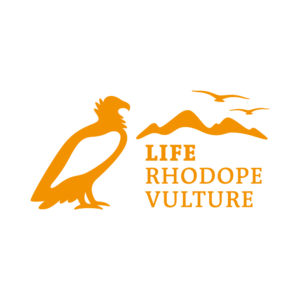
Co-funded by the LIFE Programme of the European Union and the Rewilding Europe, The LIFE Rhodope Vulture project is dedicated to the recovery of the Cinereous Vultures population in the Rhodope mountains, between Bulgaria and Greece. The project aims to increase food availability for the species and address human wildlife conflicts. It will reintroduce birds from Spain to establish a new colony in Bulgaria and conserve the Greek colony in Dadia-Lefkimi-Soufli National Park. Lastly, the project aims to foster cooperation among local businesses, conservation initiatives, and stakeholders, and raise awareness about the ecological benefits of Cinereous Vultures. The project duration is 5 years, from June 2024 to May 2029. The total budget is €4,160,118 Euro. It is coordinated by Bulgarian Society for the Protection of Birds (BSPB) with the participation of Rewilding Rhodopes Foundation. It also benefits from international collaboration, including the Vulture Conservation Foundation.

